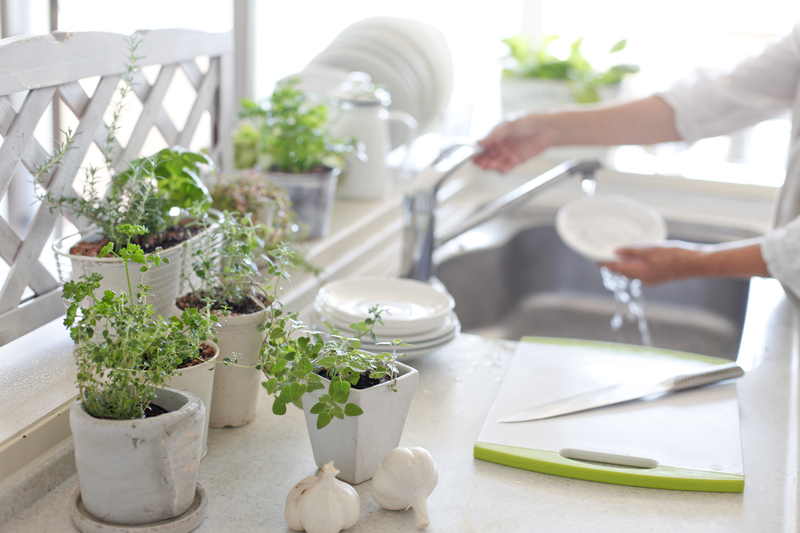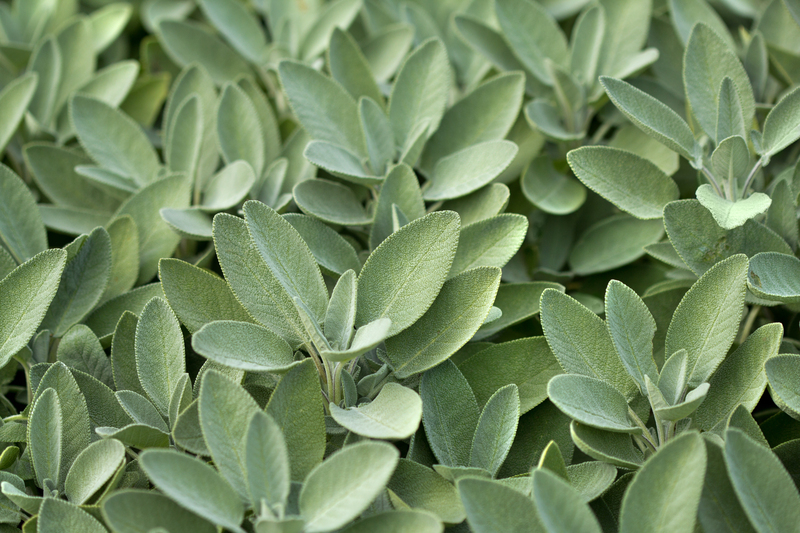Cultivate a Safe Haven for Kids with a Child-Friendly Garden
Posted on 01/09/2025
Cultivate a Safe Haven for Kids with a Child-Friendly Garden
Transforming your outdoor space into a child-friendly garden is a rewarding project for any family. Not only does it provide a safe haven for your children to play and explore, but it also encourages a love of nature, healthy habits, and endless imagination. In this comprehensive guide, you'll discover creative ideas, safety considerations, and inspiring tips to help you cultivate a safe and magical garden specially designed for kids.
Why Create a Child-Safe Garden?
A child-safe garden does more than just tick the boxes for safety. It acts as an outdoor classroom, a sensory playground, and a sanctuary that supports your child's physical and emotional development. Here are some compelling reasons to invest in a kid-friendly gardening space:
- Encourages Physical Activity: Running, jumping, and climbing in the garden helps develop motor skills and overall health.
- Fosters Creativity and Curiosity: Interacting with plants, flowers, insects, and the earth boosts curiosity and inventiveness.
- Builds Environmental Awareness: Children learn about nature, sustainability, and the seasons first-hand.
- Provides a Safe Retreat: Designing a secure garden minimizes risks and offers peace of mind for parents.
- Promotes Family Bonding: Gardening projects offer precious moments of teamwork and learning together.

Essential Elements of a Child-Friendly Garden
To truly cultivate a safe haven for kids, it's vital to blend safety, engagement, and imagination. Here's a breakdown of key elements for your child-friendly garden design:
1. Safe and Accessible Layout
- Open Spaces: Designate grassy or padded areas where children can run and play freely.
- Clear Pathways: Ensure paths are wide, smooth, and non-slip to prevent trips and falls, using materials like bark, grass, or rubber.
- Visibility: Arrange garden features for clear sightlines so adults can supervise easily.
2. Non-Toxic and Kid-Safe Plants
- Choose Carefully: Avoid plants that are toxic if ingested or have thorns, spines, or spikes.
- Engaging Plants: Select species with interesting textures, scents, and colors such as sunflowers, lamb's ear, mint, strawberries, and cherry tomatoes.
- Edible Gardens: Herbs, berries, and vegetables can be safe and delicious for kids to tend and harvest.
3. Sensory Play Features
- Water Play: Install a shallow splash area, bird bath, or safe water feature to fascinate kids and invite wildlife.
- Sand and Mud: Set up a mud kitchen or sandpit for endless imaginative play.
- Wind Chimes and Scented Plants: Fill the garden with sounds, scents, and textures to stimulate all five senses.
4. Shelter and Shaded Areas
- Sun Protection: Use trees, pergolas, or shade sails to provide shelter from harsh sunlight.
- Quiet Nooks: Build small hideaways or reading corners with benches or tents for peaceful retreat.
5. Secure Boundaries
- Fencing: Install sturdy fences or hedges to create a safe enclosure keeping children in and hazards out.
- Locked Gates: Always keep garden gates childproof and locked as needed for extra security.
Child-Friendly Garden Design Ideas
Creating a safe outdoor space for kids doesn't mean sacrificing style or fun. Here are imaginative ways to cultivate a child haven in your garden:
1. Theme-Based Garden Spaces
- Fairy or Gnome Gardens: Add toadstool seats, fairy doors, and magical pathways for make-believe adventures.
- Wildlife Gardens: Incorporate bug hotels, bird houses, and pollinator plants to attract enchanting garden visitors.
- Pirate Play Islands: Use sand, mounds, and old logs for treasure hunts and creative stories.
2. Playful Hardscape Features
- Stepping Stones: Create winding paths with colorful, mosaic, or animal-shaped stepping stones.
- Treehouses and Platforms: If you have mature trees, build a safe treehouse or lookout deck with guardrails.
- Balance Beams and Climbing Frames: Natural logs, boulders, and custom play equipment encourage gross motor play.
3. Miniature Vegetable and Herb Plots
- Raised Beds: Keep growing areas at kid height for easy access.
- Grow Tunnels: Flexible arches or tunnels covered in beans or peas make fun hideouts and learning tools.
4. Outdoor Art Corners
- Pavement Chalk Zones: Dedicate a paved space for sidewalk art.
- Nature Collage Tables: Set up a weatherproof table for crafts using fallen leaves, petals, or seeds.
How to Make Your Garden Safe for Children
Safety is the top priority when you plan to cultivate a child-friendly garden. A few key precautions can minimize risks and keep outdoor fun worry-free:
Top Child Garden Safety Tips
- Remove Hazards: Check for sharp tools, broken tiles, protruding stakes, and clear them from children's zones.
- Secure Water Features: Fountains, ponds, and pools must be fenced or covered to avoid drowning hazards.
- Safe Chemicals: Avoid using pesticides and fertilizers; opt for organic choices safe for children and pets.
- Tool Storage: Lock away garden tools, paints, and supplies after each use.
- Toxic Plant Check: Research and remove toxic plants such as foxgloves, oleander, and daffodils.
- Paved Surfaces: Choose soft-ground materials under play equipment for added cushioning during falls.
- Allergy Awareness: Be mindful of pollen-heavy plants or bee-attracting flowers if your child has allergies.
Involve Kids in Garden Planning and Care
Giving children a say in the design and upkeep of their own garden corner encourages responsibility, pride, and connection to the outdoors. Try these interactive ideas:
- Let Kids Choose Plants: Allow them to pick colors and seeds for their very own flower or vegetable patch.
- Personalized Decor: Provide paints, pebbles, or upcycled pots for decoration projects.
- Regular Garden Tasks: Assign age-appropriate chores like watering, weeding, and harvesting rewards.
- Storytime in the Garden: Dedicate a patch for reading and storytelling beneath a favorite tree or tent.
Benefits of a Safe Haven Garden for Kids
When you create a secure and stimulating garden for children, your whole family can enjoy an array of benefits:
- Physical Health: Outdoor play improves fitness, coordination, and immune systems.
- Mental Wellbeing: Green spaces reduce stress and boost mood for kids and adults alike.
- Social Development: Sharing garden activities with siblings or friends enhances cooperation and communication skills.
- Learning Opportunities: Gardening teaches science, patience, and caring for living things.
- Positive Screen Time Alternative: A captivating garden lures kids away from screens for active and imaginative play.
Low-Maintenance Solutions for Busy Families
Even if you're short on time, you can still build a secure, child-friendly garden by selecting low-upkeep features:
- Artificial Grass or Clover Lawns: Stay green and clean with minimal care.
- Robust Perennials: Opt for hardy plants that bounce back every year.
- Self-Watering Planters: Reduce watering chores for vegetable and flower beds.
- Mulched Beds: Suppress weeds and retain moisture naturally.
Garden Activities and Games for Kids
Your child-friendly garden can be the ultimate backdrop for a variety of playful and educational activities:
- Nature Scavenger Hunts: Create checklists for finding leaves, bugs, or garden treasures.
- Garden Picnics: Dine outdoors as a family, complete with homemade lemonade and healthy snacks.
- Bug Spotting and Bird Watching: Encourage kids to observe and record the wildlife that visits your garden.
- Creative Storytelling: Spark imagination by inventing tales about garden creatures or fairies.
- Painting Rocks or Flower Pots: Let kids personalize their play area and practice their artistry.

Frequently Asked Questions about Child-Friendly Gardens
What are the best non-toxic plants for a child-safe garden?
Some excellent choices include sunflowers, marigolds, nasturtiums, lamb's ear, mint, blueberries, and strawberries. Always check plant labels or consult an expert before planting.
How do I childproof water features in a garden?
Cover or fence off all water features, keep birdbaths, fountains, and ponds shallow, and supervise children closely near water at all times.
Are there garden design ideas for small spaces?
Yes! Container gardens, vertical planters, window boxes, and hanging baskets are all fantastic for maximizing space, even on balconies or patios.
What age is appropriate for children to help in the garden?
With supervision, even toddlers can join simple garden tasks. Older kids can take on more responsibility, like planting seeds, watering, and harvesting crops.
Conclusion: Create a Lasting Outdoor Sanctuary for Your Family
When you cultivate a safe haven for children with a child-friendly garden, you provide so much more than outdoor entertainment. You nurture curiosity, health, learning, and togetherness. With thoughtful planning, non-toxic plant selections, and meaningful child participation, you can design a garden that is both secure and wonderfully magical.
Start small, involve your kids, prioritize safety, and watch as your family-friendly garden blossoms into the heart of your home. Whether your space is sprawling or compact, you can create a joyful, secure, and creative oasis that will grow with your children for years to come.
Ready to transform your outdoor space? Embrace these tips and enjoy the countless rewards of a child-friendly garden haven for your family today!



